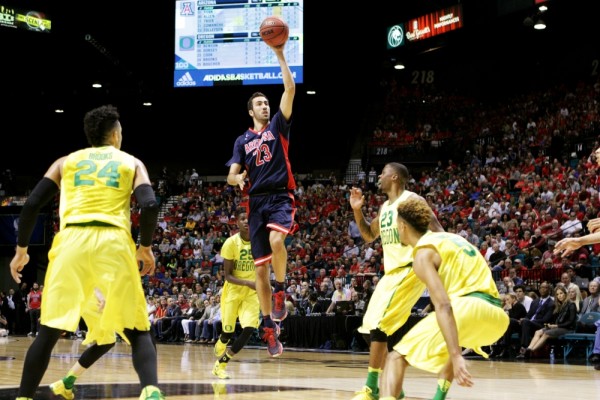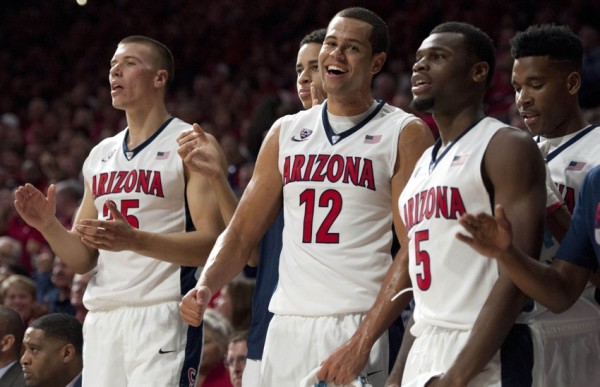Two Angles on Last Night’s Oregon/Arizona Classic
Posted by Adam Butler (@pachoopsab) and Andrew Murawa (@Amurawa) on March 12th, 2016On Friday night in Las Vegas, Oregon outlasted Arizona in stunning fashion, withstanding a furious comeback to win in overtime. Below are two perspectives on the outcome, coming from each team’s perspective.
On Arizona
What Arizona has leaned on all season long is its distinct advantage in the frontcourt. It’s a traditional looking lineup the Wildcats roll out there, which is neither right nor wrong; it’s what they have. Against Oregon, that might not cut it. Because to contextualize what the Ducks have all over its roster, they have innumerable small forwards. Arizona has none (or a few who are limited). When considering matchups, this is a tough one, arguably, for both teams. But Ryan Anderson was neutralized, Kaleb Tarczewski isn’t an offensive threat, and the rest of the team could be bullied by the mismatches. It’s what allowed Oregon to effectively win the game in the final minutes of the first half.

Mark Tollefsen Missed Just One Shot On Friday Night, But He’s Probably Still Thinking About That One (Daily Wildcat)
So naturally: what a ball game! We can exhaust the narrative of MARCH MADNESS but there’s a reason the damn line stands. Mark Tollefesen had two free throws with 0.4 seconds remaining to win the contest. To win the game. He didn’t win the game. And consider the box score. The Wildcats had 27 offensive rebounds and 27 second chance points. The Ducks had 24 points off of 15 (not a terrible number) Arizona turnovers. The Wildcats were a free throw make by an 83 percent foul shooter from winning a game in which – at that point – they had abysmal performances from Anderson and Gabe York.











































